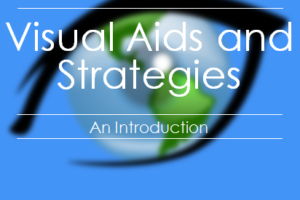Picture Exchange Communication System (PECS) is a form of augmentative and alternative communication (AAC) intervention designed to assist individuals to communicate at a functional level with the aid and the support of trained and experienced persons. The primary goal of PECS is to teach functional communication.
PECS consists of six phases and begin by teaching an individual to give a single picture of a desired item or action to a “communicative partner” who immediately honours the exchange as a request. The system goes on to teach discrimination of pictures and how to put them together in sentences. In the more advanced phases, individuals are taught to use modifiers, answer questions and comment.
THE SIX PHASES OF PECS®







PHASE I
How to Communicate
Individuals learn to exchange single pictures for items or activities they really want.
PHASE II
Distance and Persistence
Still using single pictures, individuals learn to generalise this new skill by using it in different places, with different people and across distances. They are also taught to be more persistent communicators.
PHASE III
Picture Discrimination
Individuals learn to select from two or more pictures to ask for their favourite things. These are placed in a PECS Communication Book—a ringed binder with self-adhesive hook fastener strips where pictures are stored and easily removed for communication.
PHASE IV
Sentence Structure
Individuals learn to construct simple sentences on a detachable Sentence Strip using an “I want” picture followed by a picture of the item being requested.
ATTRIBUTES & LANGUAGE EXPANSION
Individuals learn to expand their sentences by adding adjectives, verbs and prepositions
PHASE V
Responsive Requesting
Individuals learn to use PECS to answer questions such as “What do you want?”
PHASE VI
Commenting
Individuals are taught to comment in response to questions such as, “What do you see?”, “What do you hear?” and “What is it?” They learn to make up sentences starting with “I see”, “I hear”, “I feel”, “It is a”, etc.
Workshop Presentation - Visual Aids and Strategies
Contact Vizually Speaking today to learn how Visual Aids and Strategies can decrease the undesired behaviour(s), improve communication, promote independence and increase self-confidence. Through our dynamic presentation you will:
✓ Uncover the importance of using Visual Aids and Strategies.
✓ Discover the benefits of Visual Aids and Strategies.
✓ Learn how to overcome communication barriers.
✓ Promote independence and decrease undesired behaviours.
✓ Be introduced to NEW resources.
EVERYONE benefits from Visual Aids!

Vizually Speaking understands that finding time in today’s high demanding world to create visual aids and strategies can be a great challenge. Vizually Speaking is committed to collaboratively work together providing a step by step support, assisting in the development and implementation of individualized visual aids and strategies. For a FREE consultation contact us today.




